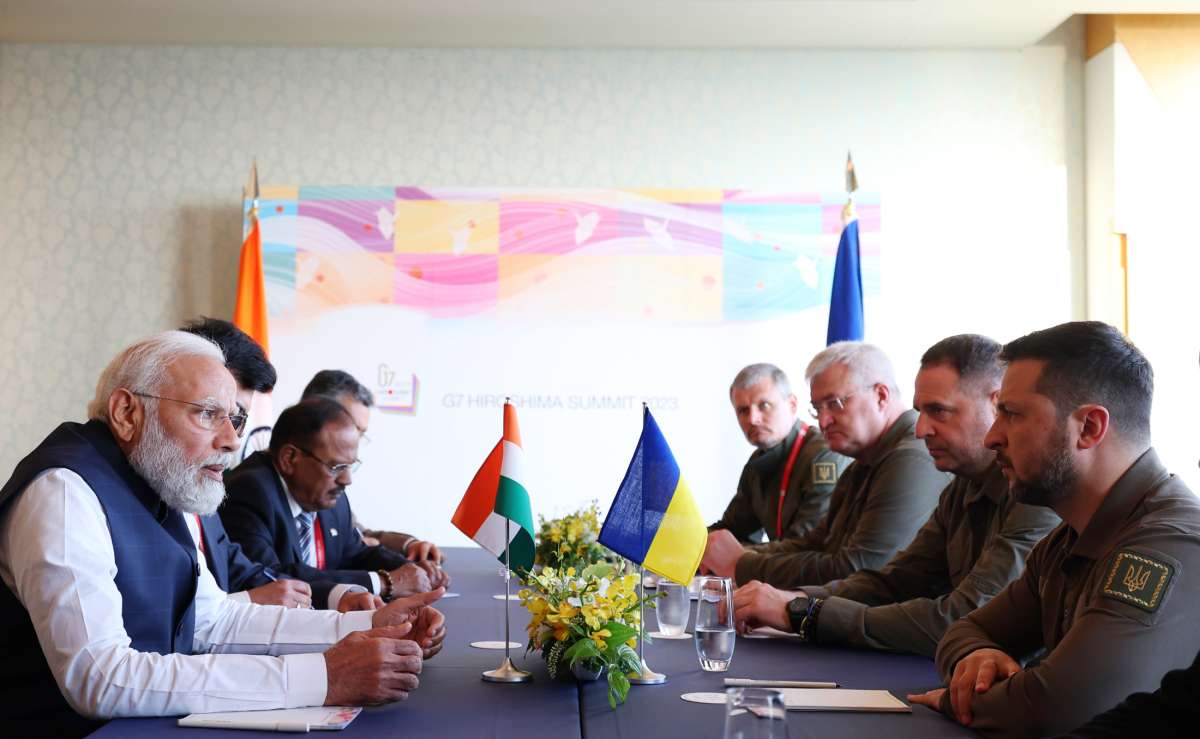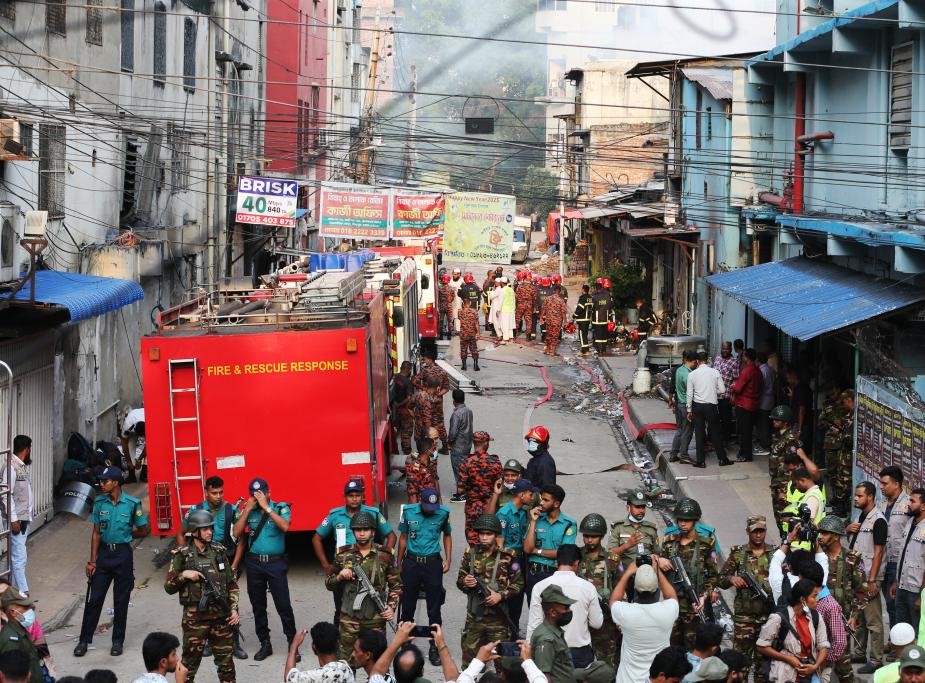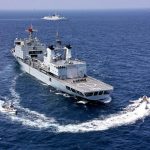India’s G20 Presidency is going well so far and it would be no surprise if the G20 summit appeals to India to make a constructive effort to bring Ukraine and Russia together for exploring the possibilities of stopping hostilities and discussing a possible peace formula, writes D.C. Pathak
Soon after the launch of military operations by Russia in Ukraine in February 2022, which resulted in an escalating armed confrontation between the two countries, Prime Minister Narendra Modi became the first world leader to call for an immediate cessation of hostilities and recourse to peace negotiations.
Modi reached out to both – Russian President Vladimir Putin and Ukrainian President Volodymyr Zelensky, as a universally acceptable ‘wise counsel’ – the US-led West had by then already become involved in support of the Ukrainian fight against Russia.
India took the stand from the very beginning of the conflict that concerns of both the warring countries had to be taken note of. Those who loudly advocated for NATO support to Ukraine implicitly upheld the Cold War approach in a situation where the dismemberment of USSR had already reduced that superpower to a much shrunken Russia.

As the prolonged war entered the second year, the emergence of China as an active stakeholder in the Ukraine-Russia conflict has drawn the attention of the world and led to intense speculation among strategic analysts about China’s President Xi Jinping’s moves in regard to this ongoing military confrontation.
China first talked of ‘principled neutrality’ but as the conflict got prolonged and showed signs of escalation, it started putting emphasis on a ‘political solution’ of the Ukraine crisis while standing firmly with Russia.
Xi Jinping’s meeting with President Putin in Moscow on March 21, 2023, underscored the Chinese stance of ‘facilitating talks for peace’ – China at the same time made moves to check the adverse geopolitical fallout of the deepening Cold War kind of polarization between the US and Russia, on its own interests.
Interestingly, China’s proclaimed 12-point stand on ‘The ‘Ukraine crisis’ made public on the completion of one year of the conflict, echoed what India’s strategic analysts had already been spelling out by way of a framework for negotiations for peace.
In China’s presentation ‘respect for the sovereignty of all countries’ is meant to uphold the cause of Ukraine while criticism of ‘unilateral sanctions’ is designed to express support for Russia.

The call for ceasing hostilities to resume peace talks is directed more at Russia but the advice to ‘abandon ‘old War mentality’ was clearly meant for the US-led West.
Like India, China was totally opposed to any use of nuclear weapons. Favouring the movement of grains and maintenance of industrial supply chains is aimed at containing the geopolitical repercussions of the conflict from the Chinese viewpoint.
‘Post-war reconstruction’ favoured by India, was an important element of the Chinese framework for peace talks too – India on its part would even expect Russia to contribute to that exercise in Ukraine as a goodwill gesture. India would like Ukraine to reaffirm its democratic polity based on the principle of ‘one man one vote’ to assuage its Russian-speaking minority and also to make it clear that it was not seeking NATO membership – these were the prerequisites for the negotiators before they could broach the subject of withdrawal of Russian troops from Ukraine.
Prime Minister Modi continues to receive endorsement universally of the idea of India taking the initiative for bringing about a peace settlement – the US, Europe, Ukraine and Russia are all in line with this proposition – and it would be quite appropriate for India not to let go of this strategic advantage over China.
A track-II initiative under the aegis of NSAs of India, Russia and Ukraine could be a good starting point in this regard.
China’s world strategy including its stand on the Ukraine-Russia military confrontation is not difficult to fathom. Xi Jinping is still pursuing the economic path to making China a superpower an’ while building the country’s military strength, he would like geopolitical stability to continue to enable China to push ahead with economic expansion.
China’s Belt & Roads Initiative (BRI) is in full swing as its strategic extension to Afghanistan and Iran proves. China continues to follow the Maoist doctrine of ‘two steps forward, one step backwards’ as was evident on the Sino-Indian border on one hand and the Indo-Pacific on the other – all this being in line with Sun Tzu’s dictum of ‘winning a war without fighting’.
China’s ambition of becoming the second superpower after the US matches the rise of Xi Jinping to the status of Mao Zedong with the Communist Party Congress last year voting for enshrining Xi’s thoughts on ‘Socialism with Chinese characteristics for the new era’ in the party’s constitution’
Earlier, the National People’s Congress lifted the two-term embargo on Presidentship making way for Xi Jinping to remain President of China for life.
Xi Jinping has also been an advocate of the ‘Sinicization’ of Marxism and talked of the ‘civilisational strength’ of China in that context.
All this makes China a formidable adversary to watch. In the context of the Ukraine-Russia military conflict, Xi Jinping has adopted the shrewd strategy of keeping the axis with Russia strong as ever, deprecating the US-led West while projecting himself as a well-wisher of Ukraine, criticising India’s membership of Quad, stepping up PLA’s build-up on LAC and attempting a new outreach in West Asia, the Gulf and Eurasia.
The Sino-Pak axis is more active against India following the abrogation of Article 370 relating to Kashmir and the two adversaries in our neighbourhood are now also indulging in covert attempts to create’ internal destabilisation here.
India’s approach of building its military to handle any aggressiveness of China on the border and strengthening multi- lateral forums to counter Chinese designs elsewhere is a sound strategy.
In these 15 months of Ukraine-Russia conflict, two things stand out – the willingness of the US-led West to pump in more armament for Ukraine to enable President Zelensky to step up Ukrainian response to military moves of Putin and a stronger US-backed campaign to isolate Russia geopolitically.
Joe Biden Administration’s calculation seems to be that a prolonged war in Ukraine would weaken Russia in the same way as the USSR was subjected to in Afghanistan in the latter ’80s’ – it wants to continue backing Ukraine in a ‘proxy war’ mode with that objective in view.
The US also seems to be attaching new importance to opening its communication with China obviously to keep the Russia-China axis from growing too strong.
The factor of human misery in Ukraine was still not weighing enough in many camps and Prime Minister Modi has appropriately highlighted this facet of the Ukraine-Russia military conflict.
India seems to be well placed at this point of time to take the initiative for facilitating a possible peace negotiation between the two warring sides. India is assured of the support of the international community for such a move.
India’s G20 Presidency is going well so far and it would be no surprise if the G20 summit appeals to India to make a constructive effort to bring Ukraine and Russia together for exploring the possibilities of stopping hostilities and discussing a possible peace formula.

The success of such a move will rest on the world community accepting the fact that the concerns of both sides would have to be understood and addressed. There is no reason why Russia and Ukraine could not live as peaceful neighbours post-Cold War if they had been left alone for a while.
Unlike former US President Donald Trump, who did not find Putin ‘problematic’, President Biden put a premium on the revival of US-Europe bonds as also the NATO and took on Russia as a declared adversary – this apparently brought back the memory of Cold War and created the impression that the neighbours of Russia including Ukraine were joining the US camp.
For US, Xi Jinping’s China which had drawn all the lessons from the demise of the USSR, was the emerging superpower to be taken on and a good American strategy would be not to set off a process that would precipitate the shift of Russia into the Chinese camp.
In any case going by what is happening in the present, cessation of hostilities between Ukraine and Russia is in the best interests of the world at large. It is hence never too late for launching the peace effort. India would be on the high moral ground in taking the initiative to start the process even if its progress appeared uncertain.
Working for a humane cause is rewarding in itself. India has nothing to lose even if talks get prolonged and move in an uncertain direction for its standing as an advocate of world peace will remain undiminished.
The biggest geopolitical advantage for India in all of this is that the Indo-U’ strategic friendship is growing unhindered notwithstanding India’s independent stand on the Ukraine-Russia conflict and our deep bonds with Russia; and that Prime Minister Modi’s influence as a world leader on various international platforms has constantly risen in recent years.
(The writer is a former Director of the Intelligence Bureau. Views expressed are personal)













